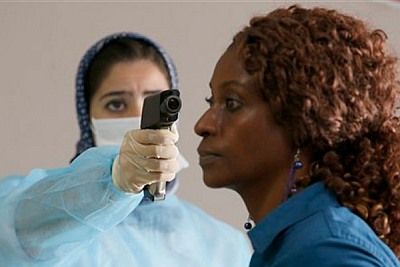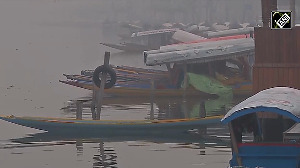No Ebola case detected in the country so far; experts say a robust preparedness plan to fight the virus missing. Sushmi Dey reports The first Ebola fatality in America has heightened anxiety across the world, with many in India wondering about the country’s preparedness to deal with the deadly virus.
The first Ebola fatality in America has heightened anxiety across the world, with many in India wondering about the country’s preparedness to deal with the deadly virus.
India is among the top five financial contributors to the United Nations’ Ebola response, with a contribution of $12.5 million. Yet, awareness and readiness to deal with the disease isn’t enough.
Health experts are concerned at the absence of proper screening machinery, inadequate detection centres and a severe lack of awareness among the public.
Ebola is a disease caused by one of five virus strains, found mostly in African countries.
The symptoms include fever, sore throat, muscle pain and headaches.
In most cases, it is followed by vomiting, diarrhoea and a rash, plus decreased functioning of the liver and kidneys.
There is no vaccine.
The largest Ebola outbreak in history is currently whirling, seemingly out of control, in West Africa.
It is a communicable disease and spreads by direct contact with a patient’s blood or other bodily fluids like urine, saliva or sweat.
The highest concentration of virus is thought to be in blood, vomit and diarrhea.
Experts say people can also get the disease by eating infected bushmeat, as Ebola can sicken animals, including bats, chimpanzees and antelopes.
According to the World Health Organization (WHO), in 1976, the disease first appeared in two simultaneous outbreaks in Sudan and Democratic Republic of Congo.
Until December 2013, a total of 23 outbreaks recorded 2,388 human cases and 1,590 deaths.
The current outbreak began in Guinea in late 2013 and spread to neighbouring countries. It is still unclear how the 2014 outbreak in West Africa started, with four countries -- Guinea, Liberia, Sierra Leone and Nigeria -- affected.
In India, the health ministry and WHO are working together to formulate a plan in case of an outbreak.
The ministry has issued warnings at the Indira Gandhi International Airport here and at Mumbai’s Chhatrapati Shivaji International Airport.
Health minister Harsh Vardhan told Parliament on August 8 that there are close to 45,000 Indians in the affected countries. The government is also monitoring some other entry points.
Though no patient has been detected in India with the virus, even a single imported case can create much damage in a densely populated country.
Officials at WHO have commended the health ministry’s pro-active approach. However, senior doctors in various hospitals and health workers across the country have raised doubts on the quality of screening.
According to a senior official at Delhi Medical Council, the preparedness is not adequate.
For one, screening needs to be tightened at airports.
Besides, even leading private diagnostic centres lack testing facilities for the virus.
Only two government laboratories, National Institute for Communicable Diseases here and National Institute of Virology in Pune, are capable of testing patients suspected of Ebola.
Officials at the All India Institute of Medical Sciences and Ram Manohar Lohia Hospital in New Delhi said no advisories had been issued by the health ministry.
“We have our own protocols. The government should issue separate advisories but we have not received anything so far. They are screening passengers from affected countries at the airport and those that are sent to us are being tested,” said a senior consultant at RML.
He said the hospital had sent samples of one patient for testing on Thursday.
Sources said while some of the leading government hospitals had separate arrangements and wards to keep patients if detected with Ebola, private hospitals do not have any instructions or preparedness to tackle an outbreak.
Ebola is a communicable disease and spreads by direct contact with an Ebola patient's blood or other bodily fluids like urine, saliva, and sweat.
The highest concentration of virus is thought to be in blood, vomit and diarrhea.
Experts say people can also get the disease by eating infected bushmeat because Ebola can sicken animals including bats, chimpanzees and antelopes.
According to WHO, in 1976, the disease first appeared in two simultaneous outbreaks in Sudan and Democratic Republic of Congo.
Until December 2013, a total of 23 outbreaks recorded 2,388 human cases and 1,590 deaths.











